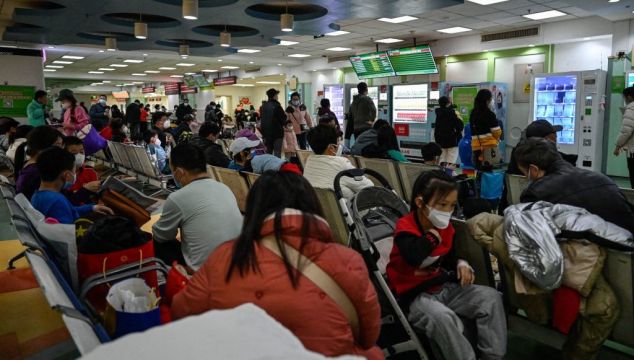A request by the World Health Organisation for more information on a surge in respiratory illnesses and clusters of pneumonia in children in China has attracted global attention.
Health authorities have not detected any unusual or novel pathogens, the WHO later said, and doctors and public health researchers say there is no evidence for international alarm.
Authorities in Taiwan, however, this week advised the elderly, very young and those with poor immunity to avoid travel to China.
The following is what we know about the surge in illness in the world's second most populous country so far, and why experts think there is no need to panic.
What is happening on the ground?
The rise in respiratory illnesses comes as China braces for its first full winter season since it lifted strict Covid-19 restrictions in December last year.
The spike in illness came into the spotlight when the WHO asked China for more information last week, citing a report by the Program for Monitoring Emerging Diseases (ProMED) on clusters of undiagnosed pneumonia in children.
Some social media users have also posted photos of children receiving intravenous drips in hospital, while media in cities such as Xian in the northwest have posted videos of crowded hospitals, fanning concerns potential strains on the healthcare system.
How big is the surge?
The National Health Commission told a news conference on November 13th that there was an increase in incidence of respiratory disease without providing further details.
WHO China told Reuters in an email that "Chinese health authorities advised that the current numbers they are observing is not greater than the peak in the most recent cold season prior to the Covid-19 pandemic".
What pathogens are circulating?
The data suggests the increase is linked to the lifting of Covid-19 restrictions along with the circulation of known pathogens such as mycoplasma pneumoniae, a common bacterial infection that typically affects younger children and which has circulated since May.
Influenza, respiratory syncytial virus (RSV) and adenovirus have been in circulation since October.
Is mycoplasma pneumoniae a big worry?
One concern about the surge in respiratory illness is mycoplasma pneumoniae, which has also spiked in other countries.
Maria Van Kerkhove, Covid-19 Technical Lead at the World Health Organisation told reporters on Wednesday that mycoplasma pneumonia is not a reportable disease to the WHO, and it was on the rise for the last couple of months but now appears to be declining.
"We're following up through our clinical networks and working with clinicians in China to better understand resistance to antibiotics, which is a problem across the world, but is a particular problem in the Western Pacific and South East Asia region," she said.
Rajib Dasgupta, an epidemiologist and professor of community health at Jawaharlal Nehru University in New Delhi, told Reuters in some cases there may be serious complications from infection caused by mycoplasma pneumoniae, but most people will recover without antibiotics.
Why experts aren't concerned?
Doctors in China and experts abroad are not too worried about the situation in China, noting many other countries saw similar increases in respiratory diseases after easing pandemic measures.
"The cases that we are seeing is nothing unusual at the moment, because it's still the same cough, colds, fever presentation, and the good thing about it is that it's actually treatable," said Cecille Brion, head of the paediatrics department at Raffles Medical Group Beijing.
Van Kerkhove said that the rise in cases was expected.
"We are seeing, in general, an increase in respiratory infections around the world. We do tend to see increases in children because they're the school-aged children, and in the northern hemisphere it's the autumn already. We're entering the winter months," she said.







